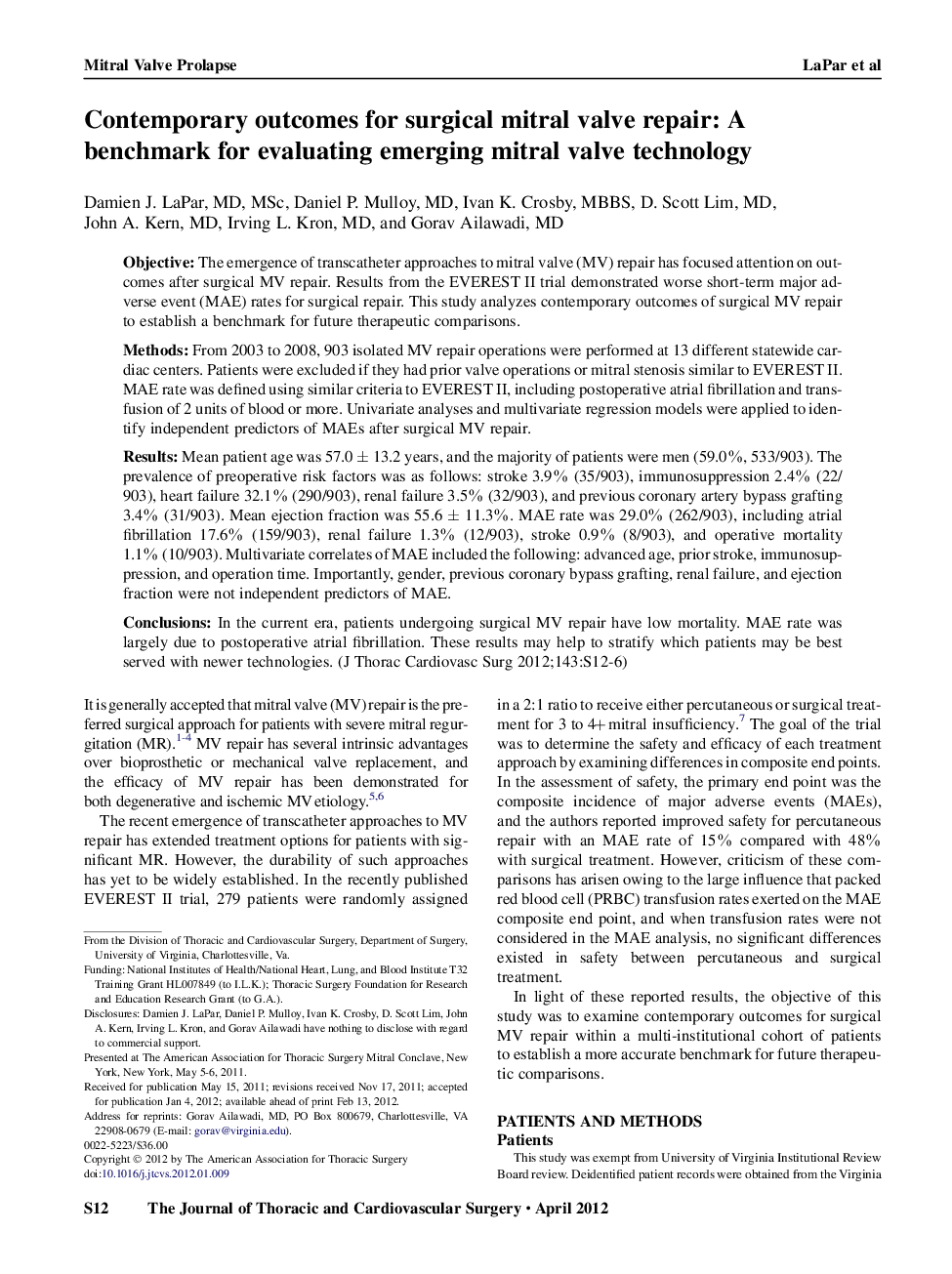| کد مقاله | کد نشریه | سال انتشار | مقاله انگلیسی | نسخه تمام متن |
|---|---|---|---|---|
| 2981406 | 1578638 | 2012 | 5 صفحه PDF | دانلود رایگان |

ObjectiveThe emergence of transcatheter approaches to mitral valve (MV) repair has focused attention on outcomes after surgical MV repair. Results from the EVEREST II trial demonstrated worse short-term major adverse event (MAE) rates for surgical repair. This study analyzes contemporary outcomes of surgical MV repair to establish a benchmark for future therapeutic comparisons.MethodsFrom 2003 to 2008, 903 isolated MV repair operations were performed at 13 different statewide cardiac centers. Patients were excluded if they had prior valve operations or mitral stenosis similar to EVEREST II. MAE rate was defined using similar criteria to EVEREST II, including postoperative atrial fibrillation and transfusion of 2 units of blood or more. Univariate analyses and multivariate regression models were applied to identify independent predictors of MAEs after surgical MV repair.ResultsMean patient age was 57.0 ± 13.2 years, and the majority of patients were men (59.0%, 533/903). The prevalence of preoperative risk factors was as follows: stroke 3.9% (35/903), immunosuppression 2.4% (22/903), heart failure 32.1% (290/903), renal failure 3.5% (32/903), and previous coronary artery bypass grafting 3.4% (31/903). Mean ejection fraction was 55.6 ± 11.3%. MAE rate was 29.0% (262/903), including atrial fibrillation 17.6% (159/903), renal failure 1.3% (12/903), stroke 0.9% (8/903), and operative mortality 1.1% (10/903). Multivariate correlates of MAE included the following: advanced age, prior stroke, immunosuppression, and operation time. Importantly, gender, previous coronary bypass grafting, renal failure, and ejection fraction were not independent predictors of MAE.ConclusionsIn the current era, patients undergoing surgical MV repair have low mortality. MAE rate was largely due to postoperative atrial fibrillation. These results may help to stratify which patients may be best served with newer technologies.
Journal: The Journal of Thoracic and Cardiovascular Surgery - Volume 143, Issue 4, Supplement, April 2012, Pages S12–S16